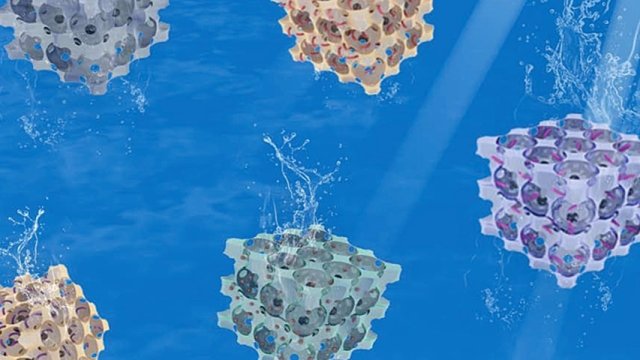Jul 1 2015
Chemists at Professor Krzysztof Matyjaszewski’s lab at Carnegie Mellon University have developed novel methods for characterizing 3D macroporous hydrogels (3DOM hydrogels), which could enable development of new “smart” responsive materials.
These materials could be used for various applications, including tissue engineering scaffolds, chemical detectors, carbon capture absorbents, and as catalysts.
 Hydrogels
Hydrogels
3DOM hydrogels are made up of an interconnected pore network, where the pores are of uniform size. A large amount of liquid can be stored by these pores based on the manner of their configuration. Furthermore, the properties of the material are influenced by the pore configuration.
The colloidal crystal templating process enables easy production of the 3DOM hydrogels. However, scientists have not been able to characterize the material’s exact internal structure due to its porous nature.
“The porous structure that makes these materials so useful is also what makes them so hard to characterize,” said Hongkun He, a doctoral student in Matyjaszewski’s lab. “The pores can hold large amounts of water, but if you remove this water to study them, the pores collapse and you can’t map them.”
An indirect electron microscopy method enabled characterization of the 3DOM hydrogels. The hydrogels were soaked in a crosslinker solution, which led to creation of stiff inverse replicas of the original 3DOM structures. The inverse replicas’ section surfaces were then imaged using scanning electron microscopy.
The hydrogels could also be rehydrated, which demonstrated the shape memory properties of the material. These critical properties play an important role in creation of smart materials.
ZEISS Xradia 800 Ultra was used to perform nanoscale resolution X-ray microscopy on the hydrated 3DOM hydrogels, which helped resolve its structure. Under ambient conditions, this nondestructive, noninvasive technique enables visualization of the hydrogels in 3 dimensions.
“This marks the first time that we have been able to visualize the reversible porous structure within this material,” said Matyjaszewski, the J.C. Warner University Professor of Natural Sciences. “Well-defined 3DOM hydrogels provide a versatile platform for a wide variety of functional materials.”
The structural characterization methods developed by the researchers for the 3DOM hydrogels could help advance materials research. The researchers were also able to graft the 3DOM hydrogels with organic polymers and compounds, which would enable the pores to be modified chemically.
The hydrogels could then be used as “stem gels” that have programmed functions and properties. These new materials could include responsive materials, bioactive hydrogels, and organic–inorganic composites. The bioactive hydrogels could be used for digestion or for separation of bio (macro) molecules.
The research team has published the results of their study in Advanced Science journal.
Other authors who contributed to this study include Saadyah Averick, Hangjun Ding, Shawn Litster, Sipei Li and Pratiti Mandal, all of Carnegie Mellon; Arno Merkle, Naomi Kotwal, and Jeff Gelb of Carl Zeiss X-Ray Microscopy. Hangjun Ding holds an appointment at the University of Science and Technology in Beijing.
The U.S. Department of Energy’s Office of Science has provided funding for this study.